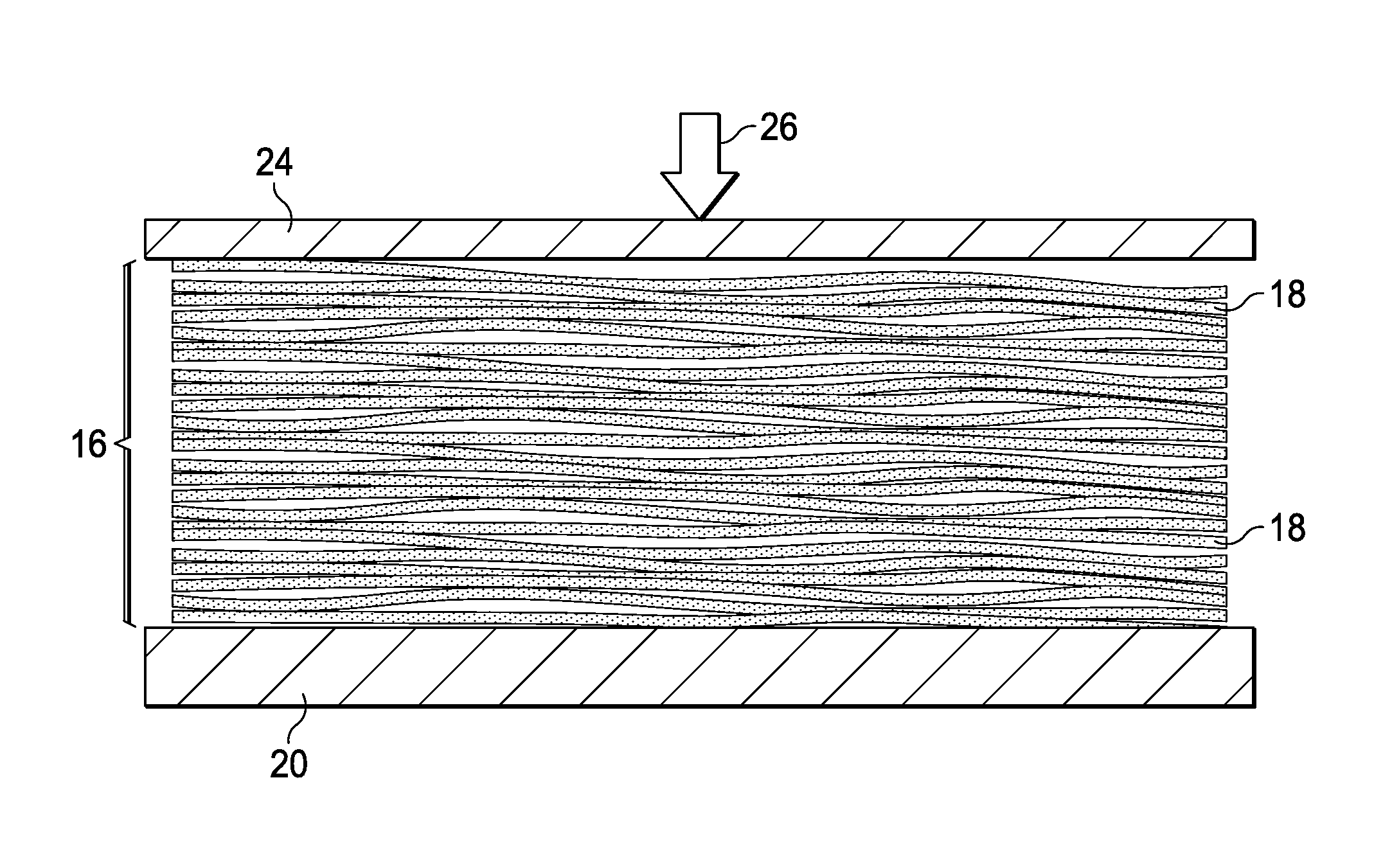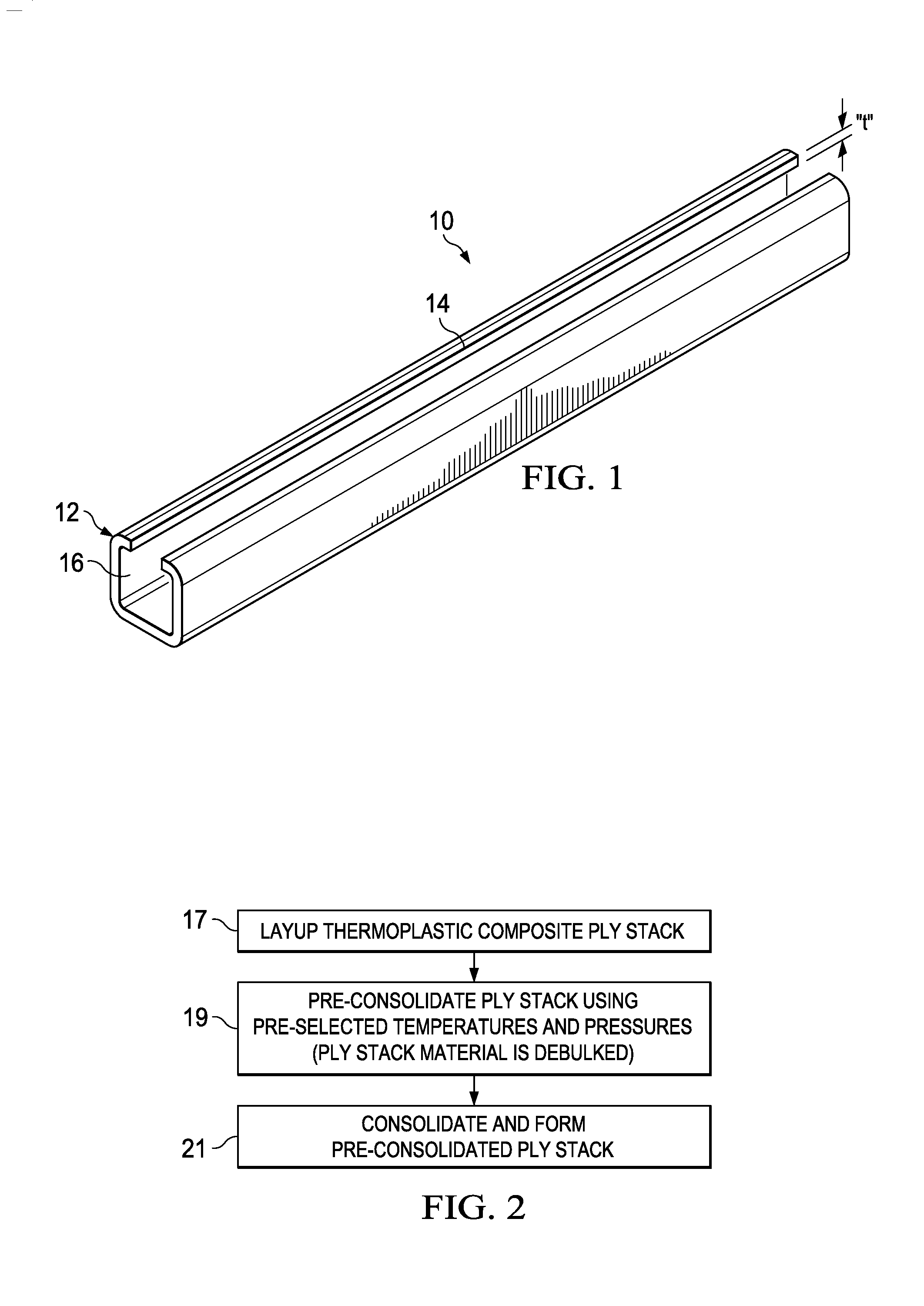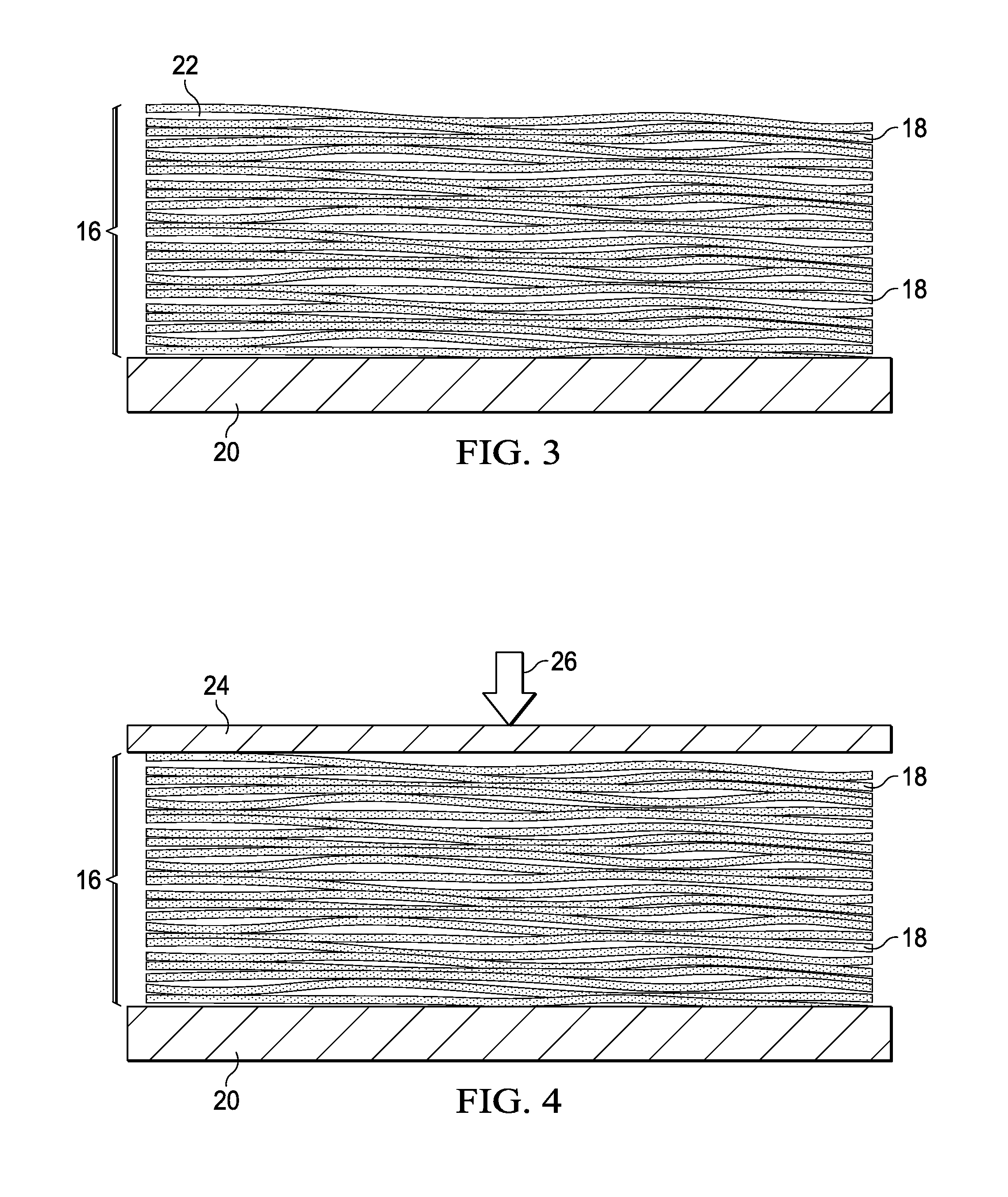Method and Apparatus for Forming Thick Thermoplastic Composite Structures
a thermoplastic composite and thick technology, applied in the field of composite laminate fabrication, can solve the problems of difficult or impossible consolidation and mold-to-form of ply stacks, difficulty in fully consolidating ply stacks during forming, and difficulty in forming ply stacks. , to achieve the effect of softening the thermoplastic resin, and reducing the thickness of ply stacks
- Summary
- Abstract
- Description
- Claims
- Application Information
AI Technical Summary
Benefits of technology
Problems solved by technology
Method used
Image
Examples
Embodiment Construction
[0024]Referring first to FIG. 1, the disclosed embodiments relate to a method of forming a relatively thick, thermoplastic composite (TCP) part 10. In the illustrated example, the TCP part 10 is a substantially straight, elongate structural member having a generally U-shaped cross-section 12 with inwardly turned flanges 14 forming a generally open interior 16. However, the disclosed method may be employed to form TCP structural members having a variety of other cross-sectional shapes, as well as curvatures or contours and / or varying thicknesses along their lengths. The TCP part 10 may comprise a laminate formed from a stack of pre-preg plies (not shown) which include a suitable thermoplastic polymer resin matrix such as, without limitation, polyetheretherketone (“PEEK”), polyetherketoneketone (“PEKK”), polyphenylsulfone (“PPS”), polyetherimide (“PEI”), which may be reinforced with a fibrous component such as glass (s-type or e-type) or carbon fiber (not shown). The reinforcing fiber...
PUM
| Property | Measurement | Unit |
|---|---|---|
| pressure | aaaaa | aaaaa |
| temperature | aaaaa | aaaaa |
| melt temperature | aaaaa | aaaaa |
Abstract
Description
Claims
Application Information
 Login to View More
Login to View More - R&D
- Intellectual Property
- Life Sciences
- Materials
- Tech Scout
- Unparalleled Data Quality
- Higher Quality Content
- 60% Fewer Hallucinations
Browse by: Latest US Patents, China's latest patents, Technical Efficacy Thesaurus, Application Domain, Technology Topic, Popular Technical Reports.
© 2025 PatSnap. All rights reserved.Legal|Privacy policy|Modern Slavery Act Transparency Statement|Sitemap|About US| Contact US: help@patsnap.com



